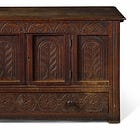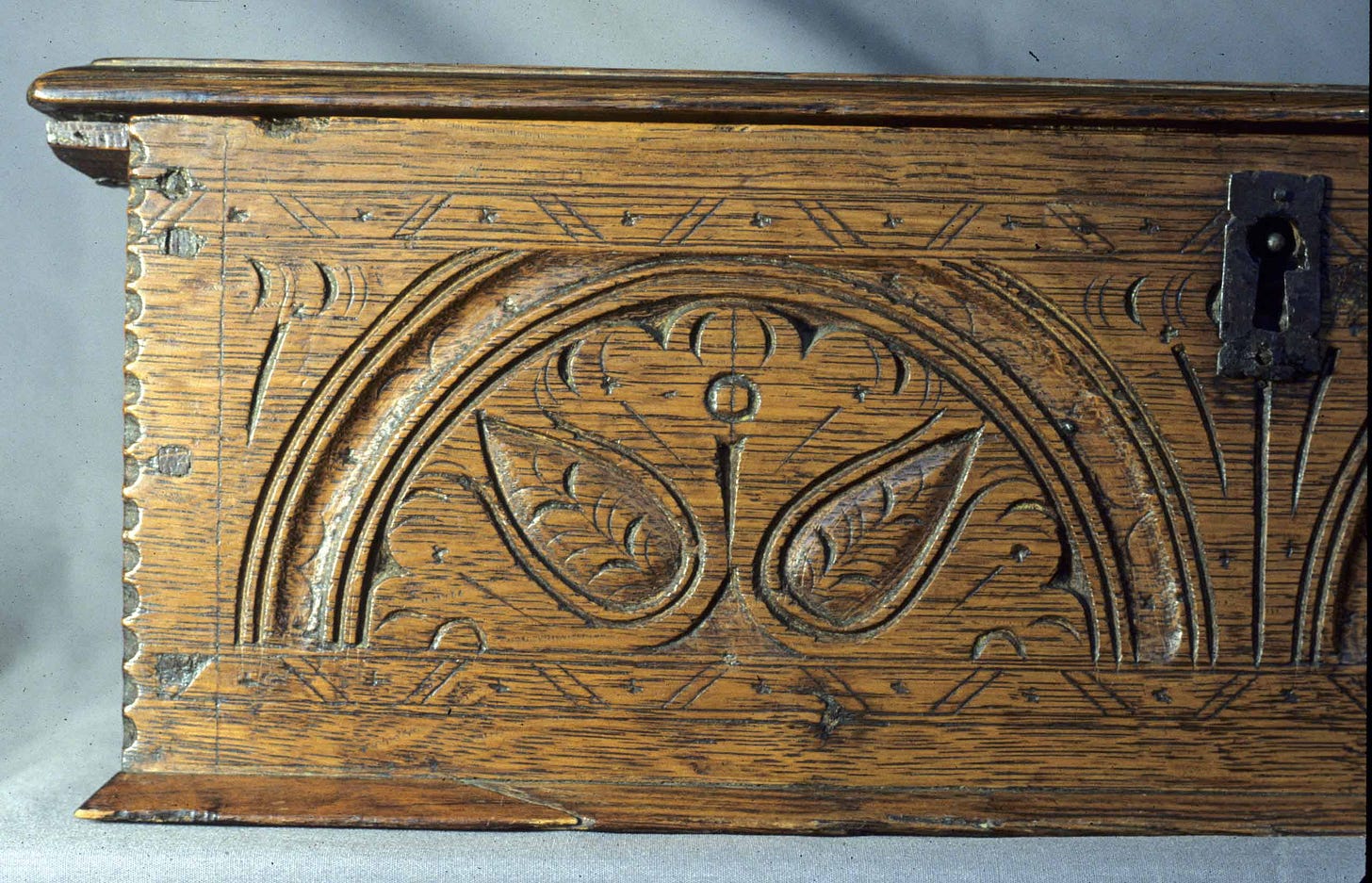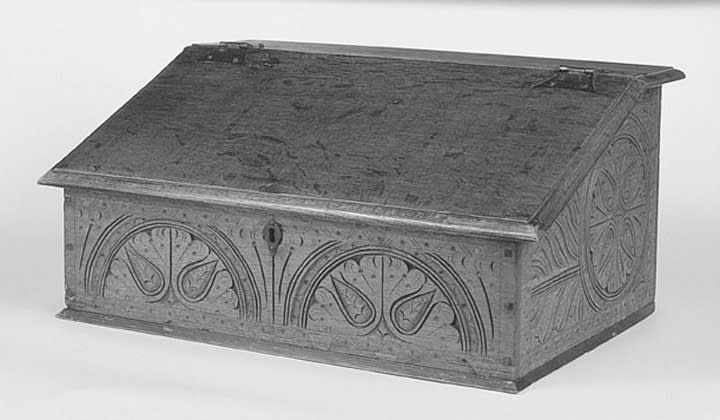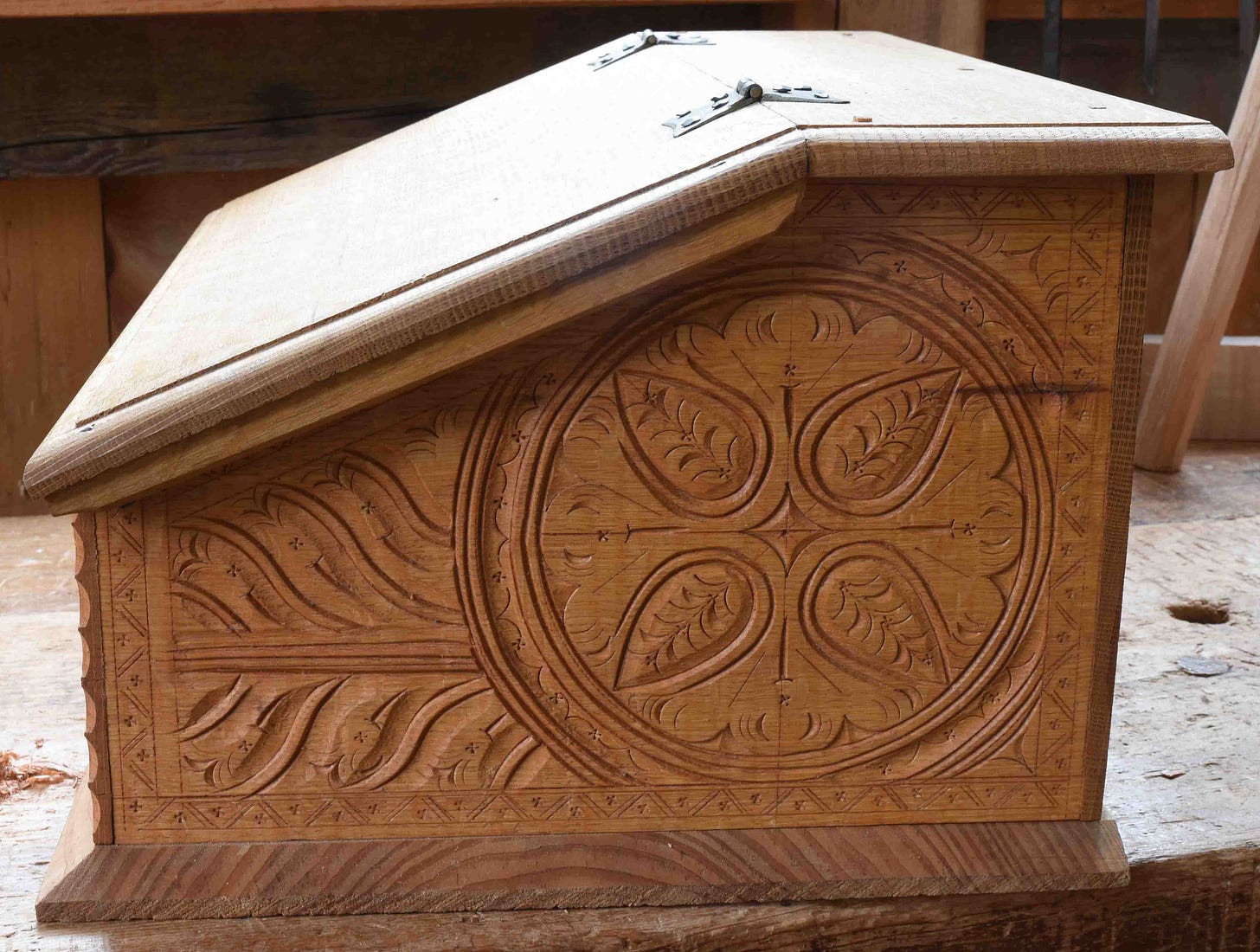[I’m planning another series of carving videos - mostly (completely) focused on carvings I know from a group of 17th-century boxes. Like the strapwork video series I did not too long ago, this one will include a slide lecture about the history of this particular group. I gotta use this research somewhere before I forget it all. This blog post is my warm up for that part…]
Some time ago I wrote about the joined chests attributed to William Savell and his sons John and William of Braintree Massachusetts, c. 1640-1700.
When Jennie Alexander and I wrote our article about them for the 1996 volume of American Furniture, there were a few boxes that were part of the group too. These were clearly the same workmanship - based initially on their carved fronts - using the same lunettes as the top rails of the chests.
The two flat-lidded boxes are both in museum collections - Museum of Fine Arts, Boston and the Metropolitan Museum of Art and are nearly identical. The Met’s is a bit deeper front-to-back. But they share many features:
the 2 lunettes across the front as well as single, different lunettes on the ends of the box
all of these lunettes have the same outline - a hollowed-out border around the semi-circle…which is stopped at the top - it doesn’t connect left-to-right. All the details are consistent from one to another. (Alexander called this border the “marble run.”)
Maltese cross punch decorating the carving
pegged rabbet joints, 3 square wooden pins secure the joints instead of the more typical nailed construction
Gouge-cuts decorate the ends of the box front.
zig-zag borders above and below the carvings
multiple tills inside, with compartments that perhaps contained small drawers.
iron gimmal hinges, securing oak lids made from two riven, glued-up boards.
The third box in the article is a desk box I’ve only seen once - it’s part of a collection in an insurance company in Hartford Ct - or it was when I saw it in the early 1990s anyway.
It’s a beauty. Same front as the two other boxes - the two lunettes, the zig-zag borders - but the slanted/angled ends have a unique pattern combining the leafy panel design from the chests with a large rosette - similar to those found on the chests’ drawer fronts. Same pegged construction, same double-tills (along with a narrow compartment across the back of the box and a shelf above that probably likewise had drawers. My version of the desk box side panel below:
Keep reading with a 7-day free trial
Subscribe to Follansbee's Substack to keep reading this post and get 7 days of free access to the full post archives.









